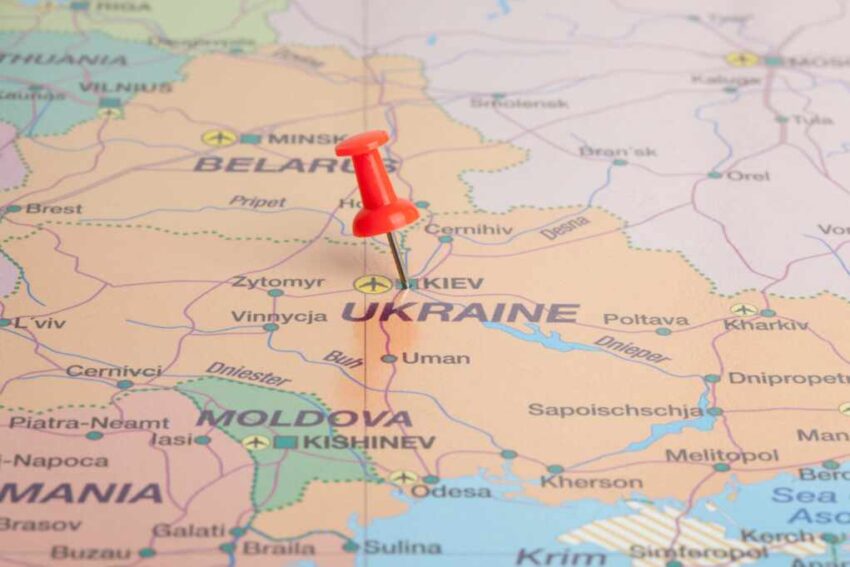Two Ukrainian women—one just 22 years old and serving as a metro police officer—were killed in their own neighborhoods as Russian missiles and drones hammered Kyiv overnight, while Western leaders and so-called experts offer little beyond more promises and recycled aid packages.
At a Glance
- Nearly 400 Russian drones and missiles struck Kyiv and other Ukrainian cities in a relentless overnight barrage.
- At least two civilians were killed, with over two dozen injured and widespread destruction of homes and infrastructure.
- Ukraine’s air defenses, already stretched thin, are being overwhelmed by Russia’s escalating use of advanced drones and AI-enabled weaponry.
- Western military aid is coming in fits and starts, with critical air defense shipments delayed by endless debate and bureaucratic infighting.
Kyiv Under Siege: Civilians Pay the Price for Geopolitical Games
Kyiv’s streets echoed with explosions and sirens once again as the Russian military unleashed a near-unprecedented wave of nearly 400 drones and missiles targeting Ukrainian cities. The attacks, which began late on July 10 and persisted for hours into the morning, killed at least two women—one a 22-year-old metro police officer—while injuring more than two dozen others. Residential buildings, schools, and hospitals suffered damage as fires raged through multiple districts. The so-called international community, meanwhile, responded with statements and “concern,” as if that would stop a hypersonic missile or intercept a swarm of AI-guided drones.
Watch a report: Kyiv Bombarded by AI-Driven Missile Storm
The volume and sophistication of Russia’s attack signal a dangerous shift. Ukrainian officials report that Moscow is now manufacturing over 5,000 drones per month, increasingly incorporating artificial intelligence to outmaneuver air defenses. Just one night earlier, a record-breaking 700 projectiles hit western Ukraine. Even with U.S.- and NATO-supplied systems in place, the scale and speed of attacks are pushing Ukrainian defenses to the breaking point.
Western Response: Promises Without Protection
President Zelenskyy renewed urgent pleas for advanced air defense systems, but the global response remains lethargic. Germany offered more Patriot batteries. The U.K. announced it would supply 5,000 Thales missiles. The U.S., after pausing shipments over domestic budget concerns, has resumed delivering 155mm shells and GMLRS munitions. But critics say these responses are more political theater than genuine support.
While Kyiv burns, Western leaders hold summits, tweet support, and debate logistics. Inside Ukraine, civilians spent the night in subway shelters, the rumble of detonations overhead their only lullaby. Ukrainian commanders warn that unless the West delivers in both volume and velocity, Russia’s momentum will only build. Every delay in procurement is a green light to the Kremlin.
AI Warfare, Civilian Fatigue, and the Cost of Delay
Military experts from the Atlantic Council and the Institute for the Study of War agree: the Kremlin’s strategy isn’t just devastation—it’s demoralization. By deploying AI-enabled drones and long-range missiles in ever-larger numbers, Russia is methodically breaking down both defenses and morale. Ukraine is being forced to make impossible choices: defend major cities, or protect the front lines?
June 2025 marked the deadliest month of the war in years, and this new escalation is likely to eclipse even those grim numbers. Psychological strain is mounting among civilians, many of whom now spend entire nights underground. They emerge to shattered homes, ruptured streets, and the gnawing uncertainty of survival. Yet Western military support remains mired in internal politics, procurement backlogs, and “strategic patience.”
The West’s War of Optics
The widening gap between rhetoric and reality is being felt most acutely in Ukraine’s neighborhoods. U.S. lawmakers debate Ukraine fatigue. European leaders fret over voter backlash. Meanwhile, humanitarian groups scream into the void, demanding that promises be replaced with action.
As Russia refines its technology and ups its tempo, the West dithers. Air raid sirens have become Kyiv’s new national anthem, and the cost of inaction is measured in funerals, amputations, and rubble. Unless Western powers match their words with hardware—fast and in force—they risk becoming collaborators in Ukraine’s collapse.
The message from Kyiv is simple: enough talk. The war is real. The missiles are real. The bodies are real. What the West chooses to do next will determine whether its moral leadership is anything more than a press release.
Click this link for the original source of this article.
Author: Editor
This content is courtesy of, and owned and copyrighted by, https://thecongressionalinsider.com and its author. This content is made available by use of the public RSS feed offered by the host site and is used for educational purposes only. If you are the author or represent the host site and would like this content removed now and in the future, please contact USSANews.com using the email address in the Contact page found in the website menu.








